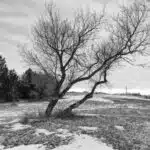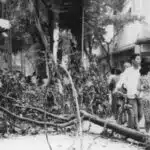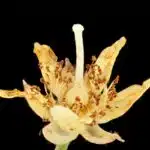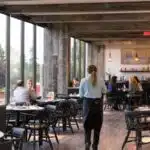As an arborist or tree expert, one of the most important aspects of maintaining healthy trees is recognizing dead wood and branches. Dead wood and branches can pose a significant threat to the overall health of a tree, as well as safety hazards to people and property. It is therefore essential for individuals who care for trees to have a thorough understanding of how to recognize dead wood and branches.
Dead wood refers to any part of a tree that has died but remains attached. It can be caused by disease, insect infestations, wounds, or environmental factors such as drought or frost damage. Dead wood may appear dry, brittle, discolored, or have cracks in the bark. The presence of dead wood can also attract pests and fungi that can further harm the tree. Recognizing dead wood early on is crucial for preventing its spread and ensuring the continued health of the tree. In this article, we will explore how to identify dead wood and branches in order to properly care for our trees and promote their longevity.
Importance Of Identifying Dead Wood And Branches
Dead wood and branches are an inevitable part of a tree’s life cycle. However, they can pose a significant risk if left unattended. That is why it is crucial to recognize the signs of dead wood and branches to prevent any potential hazards. Dead wood is a natural part of the forest ecology, but in urban areas, it can become a safety hazard for people and property.
The benefits of removal are enormous as it helps maintain the health and appearance of trees while also preventing accidents. Dead branches can fall on people or nearby structures, causing significant damage or serious injury. A homeowner who leaves dead wood unchecked risks losing their property insurance coverage because most policies require them to take necessary precautions to protect their home from damage caused by trees.
Ecological impact is another critical factor that must be considered when identifying dead wood and branches. Dead wood plays a vital role in maintaining biodiversity in forests by providing habitat for insects, fungi, birds, and mammals. It also helps recycle nutrients back into the soil. However, in an urban setting, leaving large amounts of dead wood can lead to pest or disease problems that could spread throughout the area.
Understanding the types of dead wood and branches is essential for proper identification and removal techniques. In the next section, we will discuss how to differentiate between different types of deadwood and understand which ones require immediate attention.
Understanding The Types Of Dead Wood And Branches
Dead wood and branches are an inevitable part of a tree’s life cycle. As they age, some parts of the tree may no longer be able to support new growth or leaves, rendering them useless. It is important for arborists and gardeners to identify and remove dead wood and branches from trees, as they can pose a safety hazard.
Identification methods differ depending on the type of tree being examined. In general, dead wood appears dry, brittle, and lacks any signs of life such as buds or green shoots. Dead branches may also have missing bark or hollow sections that indicate rotting has occurred. Arborists use their expertise and training to distinguish between normal aging and disease-induced death.
It is important to note that not all dead wood requires immediate removal. Deadwood that does not pose a safety risk can serve as habitats for certain birds, insects, and fungi. However, it is recommended to seek expert consultation if you are unsure about which portions of the tree require pruning or removal.
A comprehensive understanding of the types of dead wood and branches enables arborists to provide effective maintenance services for your trees. By identifying these types early on, they can prevent further damage to your trees’ health while ensuring your safety at all times. In the subsequent section, we will explore in detail the signs of dead wood and branches that you should look out for during your inspection process.
Signs Of Dead Wood And Branches
Dead wood and branches in trees can pose a risk to tree safety, property damage and environmental impact. It is crucial for arborists or tree experts to recognize the signs of dead wood and branches in order to maintain tree health and prevent hazards. Dead wood and branches are not just unsightly; they can harbor pests and diseases that could spread throughout the tree.
One of the most common indicators of dead wood is lack of foliage or leaves. If you notice that a branch or section of a tree has no leaves, it may be an indication that it is dead. Another indicator is brittle bark, which easily falls off when touched. Brittle bark can also indicate damage from pests or disease, so it’s important to investigate further.
Take note if there are any cracks in the trunk or branches as this could also be an indicator of dead wood. Cracks can weaken the structure of the tree, making it more vulnerable to damage from wind or storms. Dead wood removal not only improves tree safety but also helps promote biodiversity by allowing other plants to grow in its place. Maintaining healthy trees is critical for preserving our environment for future generations.
Moving onto visual indicators of dead wood and branches, we will explore how certain signs can help identify potential issues with trees.
Visual Indicators Of Dead Wood And Branches
Signs of dead wood and branches are essential for tree maintenance as they can pose a significant risk to human safety. Identification techniques are crucial to identifying dead wood and branches. Visual indicators such as grey or brown bark, cracks, splits, and missing bark are some common signs of dead wood. Dead branches may also show signs of decay, such as fungal growth or discoloration.
One reason for the removal of dead wood and branches is that they can fall unexpectedly and cause severe damage to property or even injure people. Dead wood can also attract pests like termites or insects that could compromise the health of other trees in the vicinity. Furthermore, removing deadwood and branches can improve the overall appearance of a tree by promoting healthy growth and reducing the risk of infection from diseases.
While visual indicators are reliable in identifying deadwood in trees, touch and sound indicators should not be overlooked. Touching a branch may reveal if it is brittle or hollow inside, indicating its death. The sound produced when tapping on a branch can also indicate whether it is alive or dead; a hollow sound indicates a decaying branch while a solid sound suggests healthy wood. Arborists use this technique along with others to make informed decisions on which areas need pruning or removal.
In conclusion, recognizing the signs of dead wood and branches is crucial for maintaining healthy trees while ensuring public safety. Visual indicators such as changes in bark color or texture can help identify potential hazards; however, other methods like touch and sound testing should not be ignored. Removal of deadwood and branches should be carried out by professionals who have experience in handling different types of trees to avoid causing further damage or endangering lives.
Touch And Sound Indicators Of Dead Wood And Branches
A dead tree or branch is a hazard that can threaten the safety of property and life. Recognizing when a tree or branch has died is essential to prevent accidents. One way to identify dead wood and branches is through touch and sound indicators.
When touching a tree or branch, there are certain things to look for that indicate death. Dead wood will feel softer than live wood because it has lost its moisture content. It may also have cracks or splits, which show signs of decay. Additionally, dead branches may be brittle and break easily under pressure.
Another way to recognize dead wood is through sound indicators. When tapping on a tree or branch with a mallet or hammer, listening for changes in sound can help determine if it is alive or not. Live wood will produce a sharp, clear sound while deadwood will produce a dull thud.
To further understand how to detect deadwood and branches by touch and sound, here are some visual cues:
- Deadwood often has peeling bark.
- There may be visible holes created by insects.
- The leaves on the branch may have turned brown.
- Twigs may snap off easily when bent.
- The bark may be discolored or falling off.
Recognizing the signs of dying trees and branches is critical for ensuring tree safety and health. Being aware of touch and sound cues can help identify deadwood before it becomes hazardous. In the next section, we will explore another indicator: smell cues for recognizing deadwood and branches.
Smell Indicators Of Dead Wood And Branches
Fungi is often associated with the smell of dead wood and branches, as they are typically found in rotting or decomposing wood. Mushrooms are often found growing on dead wood and branches, and can give off a putrid or sour scent. Rotting wood is a sign of wood decay, and often produces a mildew or musty smell. Wood decay is often accompanied by a sap odor, as well as an ammonia or mold smell, which can indicate the presence of insects or woodpeckers.
Fungi
As an arborist, one of the key indicators of dead wood and branches is the presence of fungi. Fungi play a crucial role in decomposition, breaking down organic matter and returning nutrients to the soil. However, when it comes to trees, fungi can indicate a problem. When a tree is stressed or has been damaged, it may not be able to defend against invading fungi. As these fungi grow and spread within the tree, they weaken its structure and make it more prone to breaking or falling.
Fungi can also have an impact on biodiversity within ecosystems. While some species of fungi are beneficial to trees, others are harmful and can even lead to their death. This can have cascading effects on other organisms that rely on those trees for food or shelter. In addition, some types of fungi can release toxins that harm other plants or animals in the area. As such, it’s important for arborists to recognize when fungus is present on trees so that appropriate action can be taken.
Overall, understanding the role of fungi in tree health and ecosystem dynamics is crucial for arborists and anyone else interested in preserving our natural environment. By recognizing signs of fungal growth on dead wood and branches, we can identify potential problems early and take steps to mitigate them before they cause further damage. Staying informed about the latest research on this topic is also essential for ensuring that we are doing our part to protect biodiversity and support healthy ecosystems.
Mushrooms
As an arborist, one of the important aspects of identifying dead wood and branches is through their smell indicators. When a tree is stressed or damaged, it releases volatile organic compounds that create distinct smells. These smells can be used to identify the health of the tree and determine if there are any fungal or bacterial infections present.
One type of fungus that may grow on dead wood and branches are mushrooms. While some species of mushrooms are edible and have medicinal properties, others can be toxic and harmful to humans and animals alike. As such, it’s crucial for arborists to recognize the different types of mushrooms that may grow on trees to ensure they take appropriate actions.
Edible mushrooms such as oyster mushrooms or shiitake mushrooms can indicate healthy decomposition processes within a tree. However, toxic mushrooms such as Amanita phalloides or Death Cap mushroom can pose a danger to individuals who accidentally ingest them. Arborists must identify these types of fungi on trees immediately so they can take necessary measures to prevent any harm from occurring. By understanding the different types of mushrooms that grow on trees, arborists can protect both human health and biodiversity within ecosystems.
Common Causes Of Dead Wood And Branches
Dead wood and branches in trees can be recognized through a variety of indicators, including physical appearance, bark condition, and sound. Physical appearance is one of the most obvious ways to identify dead wood and branches as they tend to have a different color and texture than healthy wood. Bark condition is another indicator as dead wood and branches often have dry or peeling bark. The sound of dead wood can also be identified by tapping the branch with a tool such as a hammer or mallet; if it produces a hollow sound, it could be dead.
There are several common causes of dead wood and branches in trees. One of the most common reasons is improper pruning techniques that cause damage to the tree’s structure. Other factors include insect infestations, disease, weather conditions, and natural aging. Tree diseases such as Dutch Elm Disease or Oak Wilt can cause extensive damage to trees resulting in large sections of deadwood. Understanding the underlying causes of deadwood is essential for preventing it from occurring in trees.
Preventing and managing deadwood requires proper tree maintenance techniques such as regular pruning and inspections. Pruning techniques can vary depending on the size of the branch, location on the tree, and type of tree being pruned. Regular inspections can help identify potential issues early on before they become more severe problems that require drastic measures like removal or large-scale treatment. By understanding tree diseases and taking preventative measures to reduce their impact, arborists can help ensure that trees remain healthy for years to come.
Moving forward into our next section about effects of deadwood on tree health we will explore how these various causes can impact overall tree health over time if not properly managed.
Effects Of Dead Wood And Branches On Tree Health
Decay is a process of deterioration caused by microorganisms, such as fungi and bacteria, that break down organic matter. Decay can weaken the structure of a tree, making it more susceptible to storm damage and insect infestation. Diseases caused by fungi, viruses, or bacteria can also weaken a tree, making it more vulnerable to external factors. Insects can cause damage to trees when they feed on the needles and sap, or when they bore into the bark or heartwood. The presence of dead wood and branches can provide an ideal habitat for insects, leading to further damage and weakening of the tree.
Decay
As arborists, it is important to recognize the benefits of decay in trees. Deadwood and branches may seem like a nuisance, but they play a vital role in the ecosystem. Decay helps recycle nutrients back into the soil, providing nourishment for other plants and organisms. Additionally, dead wood can provide shelter and nesting sites for wildlife.
However, not all decay is beneficial. It is crucial to be able to identify when decay has become detrimental to the health of a tree. Some signs of unhealthy decay include soft or mushy wood, visible cavities or cracks in the trunk or branches, and an abundance of fungi growing on the tree. If left unchecked, this can lead to structural instability and even death of the tree.
Regular inspections by a trained arborist can help catch these issues early on and prevent further damage. By addressing unhealthy decay promptly, we can ensure that trees continue to play their important role in our ecosystem for years to come.
Disease
Disease is another factor that can have a significant impact on the health of trees. Just like humans, trees can contract diseases caused by fungi, bacteria, and viruses. These diseases can weaken the tree’s immune system, making it more susceptible to other ailments such as insect infestations or environmental stressors.
Prevention measures are crucial in mitigating the risk of disease in trees. Proper planting techniques, regular watering and fertilization, and pruning dead or diseased branches are all essential steps in maintaining healthy trees. Additionally, avoiding damage to a tree’s roots or trunk during construction projects can help prevent disease from taking hold.
If a tree does become infected with a disease, there are treatment options available to help save it. The most effective treatment will depend on the specific disease and its severity. Some options include applying fungicides or antibiotics directly to the affected areas or removing infected branches entirely. However, it is important to note that not all diseases can be cured, and in some cases, removal of the entire tree may be necessary to prevent further spread of the disease.
By understanding how disease affects trees and implementing proper prevention measures and treatment options when necessary, arborists can help ensure that our urban forests remain healthy and thriving for years to come.
Insects
Dead wood and branches can have a significant impact on the health of trees. They can attract insects, which can cause damage to the tree and increase the risk of disease. Insect infestations can weaken a tree’s immune system, making it more susceptible to other ailments such as environmental stressors or diseases caused by fungi, bacteria, or viruses.
Woodpecker damage is another issue that can arise from dead wood and branches in trees. Woodpeckers often seek out dead or dying trees for nesting and foraging purposes. However, when they begin to peck at healthy trees, it can be a sign that there is an underlying problem with the tree’s health. This could be due to insect infestations or disease caused by dead wood.
To prevent insect infestations and woodpecker damage in trees, it is essential to regularly prune dead or diseased branches and remove any dead wood from the tree’s canopy. Additionally, maintaining proper watering and fertilization techniques can help keep a tree’s immune system strong and resilient against potential threats. By taking these preventative measures, arborists can help ensure that our urban forests remain healthy and thriving for years to come.
Risks And Hazards Of Dead Wood And Branches
The presence of dead wood and branches in trees can be likened to a ticking time bomb waiting to explode. These seemingly harmless parts of the tree may look unassuming at first glance, but they can pose serious risks and hazards to people and property alike. As an arborist or a tree expert, it is crucial to assess the liability of these dangerous elements and take appropriate action before any harm is caused.
Assessing liability should be the first step in dealing with dead wood and branches. Liability arises when there is the possibility of harm or injury caused by falling debris from trees. A comprehensive inspection should be conducted, taking into consideration factors such as the size, age, species, location, and structural integrity of the tree. Failure to identify potential hazards could result in serious consequences, including injury or even death.
Tree removal options are available for those who want to eliminate the risk altogether. However, this decision should not be made lightly as removing a tree can have a significant impact on the environment and surrounding ecosystem. It is important to consult with professionals before making any decisions about removing a tree or its limbs. If removal is deemed necessary, there are several options available depending on the situation.
With proper assessment and knowledge of available options for removing dead wood and branches, property owners can take preventative measures to ensure their safety and that of others around them. In the subsequent section, we will discuss some effective preventative measures that can be taken against dead wood and branches on trees.
Preventative Measures For Dead Wood And Branches
Preventing decay in trees is essential for maintaining their structural stability and preventing hazards from falling dead wood and branches. It is crucial to identify and remove dead or diseased branches, as they can rot and spread decay throughout the tree. The first step towards prevention is regular tree maintenance to keep it healthy and free of defects.
Tree safety measures involve various practices to mitigate potential hazards, including pruning, cabling, bracing, and installing lightning protection systems. Pruning involves removing the damaged or diseased parts of the tree and shaping it to promote healthy growth. Cabling and bracing are techniques used to reinforce weak branches or those with a narrow angle of attachment. Lightning protection systems are installed in trees that are prone to lightning strikes.
To assist in preventing decay, there are several preventative measures you can take. Firstly, avoid causing damage to the roots or bark when performing any kind of landscaping around the tree. Secondly, reduce soil compaction by adding organic matter such as mulch around the base of the trunk. Finally, water your tree regularly during dry periods to keep it hydrated.
As an arborist or tree expert, it is critical to prioritize preventative measures for dead wood and branches before they become hazardous liabilities. By taking proactive steps such as regular maintenance, implementing safety measures like pruning and cabling/bracing systems, and adopting preventative practices like avoiding root/bark damage, reducing soil compaction with mulch application, and watering during dry seasons – you can ensure that your trees remain healthy for years to come. In the subsequent section about removing dead wood/branches techniques, we will discuss specific methods used by professionals that help maintain safety while removing these hazards from your property’s landscape.
Techniques For Removing Dead Wood And Branches
After implementing preventative measures for dead wood and branches, it is important to be able to recognize when these issues still exist on a tree. Dead wood can manifest in a variety of ways, such as discolored bark, lack of leaves or needles, and brittle texture. Branches that are dead may also have broken or missing bark, cracks or splits in the wood, and may be hanging down at an unusual angle.
Identifying these symptoms of dead wood and branches is crucial for tree safety. Dead branches can easily fall and pose a risk to people or property below. Additionally, leaving deadwood on a tree can have negative ecological impacts as it will attract pests and diseases that could spread to other healthy trees.
While professional removal is always recommended for larger jobs or if there is any doubt about one’s ability to do the job safely, there are some DIY options available for pruning smaller areas of dead wood. Before attempting any pruning, it is important to ensure proper tools are being used and that any safety equipment necessary (such as gloves or eye protection) is worn. It is also important to properly dispose of any removed branches or debris.
Moving forward into techniques for removing dead wood and branches, pruning can be an effective way to improve tree health while also promoting safety.
Pruning Dead Wood And Branches
Pruning dead wood and branches is a crucial aspect of maintaining the health and appearance of trees. Dead wood refers to tree branches that have died and are no longer receiving nutrients from the trunk. These branches can be easily recognized by their lack of leaves, brittle texture, and grayish-brown color. Removing dead wood is important because it can pose a safety hazard, attract pests, and hinder the growth of healthy branches.
Practical solutions for pruning dead wood include using proper tools such as pruning shears or loppers, making clean cuts at the right angle, and avoiding over-pruning. DIY trimming techniques should be done with caution as improper cuts can damage the tree further or create an uneven shape. Always consult with a professional arborist if you are unsure about how much to prune or which branches should be removed.
In addition to improving tree health, pruning dead wood can also benefit wildlife habitat. Dead trees provide homes for many species including birds, bats, and insects. Instead of completely removing dead trees from your property, consider leaving them as they are or creating a wildlife habitat by placing nesting boxes in nearby healthy trees. By taking these steps to properly prune dead wood and branches while also preserving wildlife habitat, you can help maintain a healthy ecosystem in your community.
As we have seen, pruning dead wood and branches is essential for tree health and safety while also contributing to wildlife habitat preservation. However, it is important to approach this task with care by using proper tools and techniques or consulting with an expert arborist when necessary. In the next section, we will explore how dead wood and branches contribute to wildlife habitat in more detail.
Dead Wood And Branches And Wildlife Habitat
Pruning dead wood and branches is essential to maintaining tree health. Dead wood is a term used to describe branches or twigs that are no longer alive. They can be identified by their lack of foliage, and they often appear dry and brittle. Pruning these branches prevents the spread of disease and decay throughout the rest of the tree. It also improves the tree’s appearance, making it more aesthetically pleasing.
While pruning dead wood and branches is important for tree health and aesthetics, it’s also crucial for wildlife benefits and ecological function. Dead wood provides habitat for many kinds of animals, including insects, birds, and mammals. These animals use dead wood as nesting sites, shelter from predators, and sources of food. Dead wood is also an important source of nutrients for other plants in the ecosystem.
Incorporating wildlife benefits into tree management practices is becoming increasingly important as we recognize the importance of maintaining ecological function in our urban environments. By leaving some dead wood in trees when possible, we can provide habitat for wildlife while still maintaining healthy trees. This approach also helps to create more natural-looking landscapes that are visually appealing to humans as well as beneficial for wildlife. In the next section, we will explore how dead wood and branches can be managed to balance both aesthetic considerations and ecological function in our urban forests.
Dead Wood And Branches And Tree Aesthetics
- Dead wood and branches can be identified by their discoloration, lack of foliage, and lack of bark growth.
- Pruning dead wood is an important part of maintaining tree health and aesthetics and should be done carefully.
- Dead wood can be removed in order to improve the overall look of the tree and reduce the risk of insect and disease infestations.
- Proper pruning techniques should be used to ensure that the tree’s structural integrity is maintained and that the tree is not damaged.
- Tree aesthetics can also be improved by careful selection of new growth and pruning of existing branches in order to create a pleasing form and structure.
- Creation of proper spacing between branches can also improve the overall look of the tree and reduce competition for resources.
Identifying Dead Wood
When it comes to identifying dead wood, there are several common mistakes that people often make. One of these is assuming that a lack of leaves or flowers on a branch means it is dead. While this can be an indication, it is not always the case, as some healthy branches may not produce leaves or flowers due to environmental factors. Another mistake is relying solely on the color of the bark to determine if a branch is dead. Younger trees and certain species may have naturally darker bark, which can create confusion when trying to identify dead wood.
As an arborist or tree expert, there are several expert tips that we use to help identify dead wood and branches more accurately. One technique involves using a small knife to scrape away a small piece of bark from the branch in question. If there is green tissue beneath the bark, then the branch is likely still alive. However, if there is brown or black tissue present, then the branch has died. Another tip involves examining the overall structure of the tree and looking for any obvious signs of decay or damage, such as cracks in the trunk or large cavities in the branches.
Weather and climate can have a significant impact on dead wood and branches as well. Extreme weather conditions like droughts and storms can cause stress on trees and weaken their structural integrity. This stress can lead to dying branches or entire sections of the tree becoming weakened over time. Therefore, regular inspections by an arborist should be conducted to ensure that any dead wood or branches are promptly removed before they become hazardous to people or property nearby.
Remember that identifying dead wood correctly requires careful observation and attention to detail. By avoiding common mistakes and following expert tips, you can ensure that your trees remain healthy and beautiful for years to come while minimizing any potential hazards caused by decaying branches or limbs.
Pruning Dead Wood
Dead wood and branches not only pose a safety hazard but also affect tree aesthetics. As an arborist or tree expert, it is essential to know the pruning techniques for dead wood to maintain the health and beauty of trees. Pruning dead wood can improve the appearance of the tree, promote healthy growth, and prevent further damage caused by decaying branches.
Pruning techniques for dead wood involve removing diseased, dying, or dead branches from a tree. It is crucial to use sharp tools when pruning to avoid damaging the living tissue of the tree. Before pruning, it is vital to examine the entire tree carefully and identify any hazardous areas that may fall on people or property nearby during pruning. Safety precautions such as wearing protective gear like gloves and helmets should also be taken while pruning.
When pruning dead wood, it is important to make clean cuts close to the collar of the branch without leaving stubs. Stubs left after cutting can cause decay and increase the risk of insect infestation. Pruning cuts should be made at an angle that allows water to drain off quickly and prevents water accumulation that can lead to rotting.
In conclusion, regularly inspecting trees for dead wood and branches is crucial for maintaining safety and aesthetics in outdoor spaces. Pruning techniques such as removing diseased or dying branches should be carried out with safety precautions such as using sharp tools, examining trees before pruning, making clean cuts close to branch collars without leaving stubs, and cutting at an angle that promotes water drainage. With proper pruning techniques in place, trees can remain healthy and beautiful while minimizing potential hazards caused by decaying branches or limbs.
Improving Tree Aesthetics
As arborists, we understand the importance of maintaining the aesthetics of trees in outdoor spaces. Dead wood and branches not only pose a safety hazard but also affect the overall appearance of the tree. Tree trimming techniques and tree shaping methods can be used to improve the beauty of trees while promoting healthy growth.
One technique for improving tree aesthetics is crown thinning. This involves selectively removing branches from the crown of the tree to reduce its density and allow more light to penetrate. Crown thinning can enhance the overall appearance of a tree by giving it a more open, airy look. It also promotes healthy growth by reducing competition for nutrients and sunlight among branches.
Another method for improving tree aesthetics is crown raising. This involves removing lower branches from a tree to raise its canopy height. Crown raising can be done for practical reasons, such as clearing space for pedestrians or vehicles, or simply to give the tree a more elegant appearance. Proper pruning techniques such as making clean cuts close to branch collars without leaving stubs should always be used when performing these methods to prevent damage to living tissue and promote healthy growth in trees.
Conclusion: The Importance Of Regular Tree Maintenance
Regular tree maintenance is essential in keeping trees healthy and vibrant. Dead wood and branches are just some of the problems that can arise if a tree is not regularly maintained. As an arborist or tree expert, it is important to know how to recognize dead wood and branches.
One of the most effective ways to recognize dead wood and branches is through visual inspection. Signs such as cracks, splits, peeling bark, and hollows indicate that a branch or piece of wood may be dead or dying. Additionally, discoloration and decay can also be signs of dead wood or branches. It is important to note that not all decaying wood is necessarily dead; however, it could pose a threat if not handled properly.
Dead wood and branches can pose serious risks to both people and property. Falling debris from trees can cause major damage during storms or high winds. Hiring professionals for regular tree maintenance can help prevent these accidents from happening. Professionals have the necessary equipment and training to safely remove dead wood and branches without causing further damage to the tree.
While DIY tree maintenance tips may seem like a cost-effective solution for homeowners, it is important to remember that proper training and equipment are necessary for safe pruning practices. Without proper knowledge of how to prune trees correctly, homeowners may unintentionally harm their trees instead of helping them. In addition, attempting DIY tree maintenance without the proper safety equipment can result in serious injury.
In summary, regular tree maintenance is crucial in maintaining healthy trees. Recognizing the signs of dead wood and branches is just one aspect of proper tree care. Hiring professionals for regular maintenance ensures safety for both people and property while providing optimal care for your trees. Though DIY tips may seem appealing, it is important to prioritize safety by hiring trained professionals when it comes to maintaining your outdoor space.
Conclusion
The identification of dead wood and branches is crucial for maintaining the health and safety of trees. As arborists, we understand that dead wood and branches can pose a risk to both humans and wildlife, as well as compromise the structural integrity of the tree. It is essential to recognize the signs of dead wood and branches to prevent any potential accidents or damage.
There are two types of deadwood: standing and lying. Standing deadwood refers to branches or parts of the trunk that remain upright on the tree, while lying deadwood refers to branches or parts of the trunk that have fallen onto other objects or structures. Signs of dead wood include a lack of leaves or buds, cracks in bark, fungus growth, and insect infestations.
Visual indicators such as color changes, peeling bark, and branch angles can also indicate potential dead wood areas. In addition to visual cues, touch and sound indicators such as brittle texture or hollow sounds when tapped can help identify dead wood. Pruning is necessary to remove any dead branches or limbs safely. Dead wood also plays an important role in providing habitats for wildlife; however, it must be managed correctly.
Dead wood can also affect tree aesthetics negatively if left unattended. Regular maintenance is crucial for healthy trees with aesthetically pleasing visuals.
In conclusion, recognizing the signs of dead wood and branches is vital for maintaining healthy trees while ensuring safety for both humans and wildlife. The use of proper pruning techniques allows for optimal management while preserving tree aesthetics. Remembering that “a stitch in time saves nine” emphasizes the importance of regular tree maintenance in preventing larger problems down the road.
Image Credits
- “Dead wood” by SophieG* (featured)

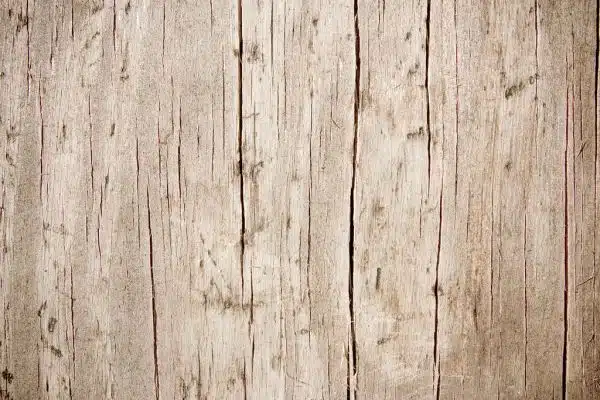









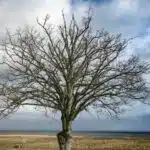
![How To Repair Rotted Wood 12 Texture : Altario Buick Estate Wagon : Rotting Faux Wood Paneling [1 of 2]](https://green-life.blog/wp-content/uploads/2023/05/z1CersK-gCjq-150x150.jpg.webp)
